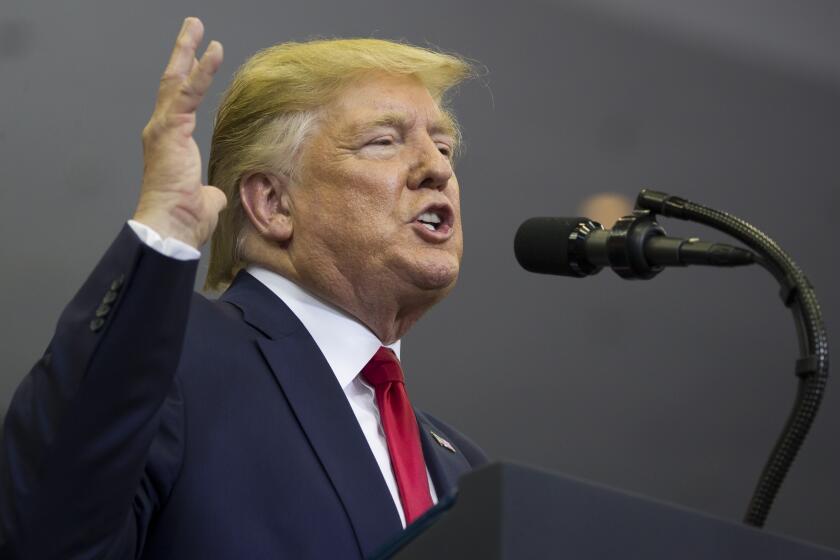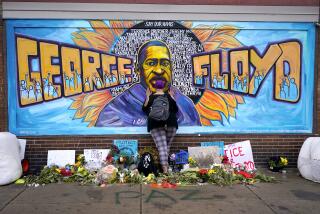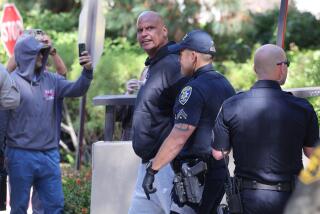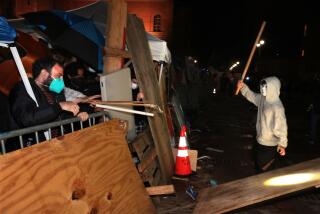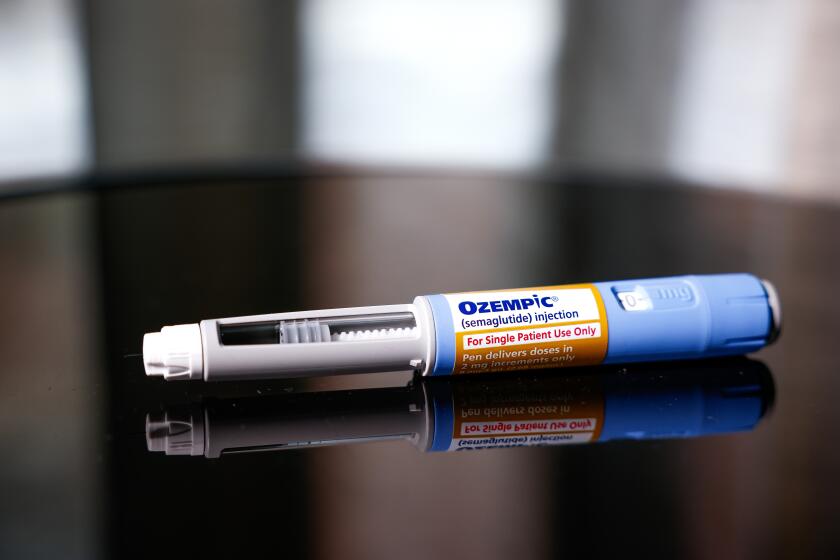Editorial: There is no excuse for government-sanctioned violence against the free press
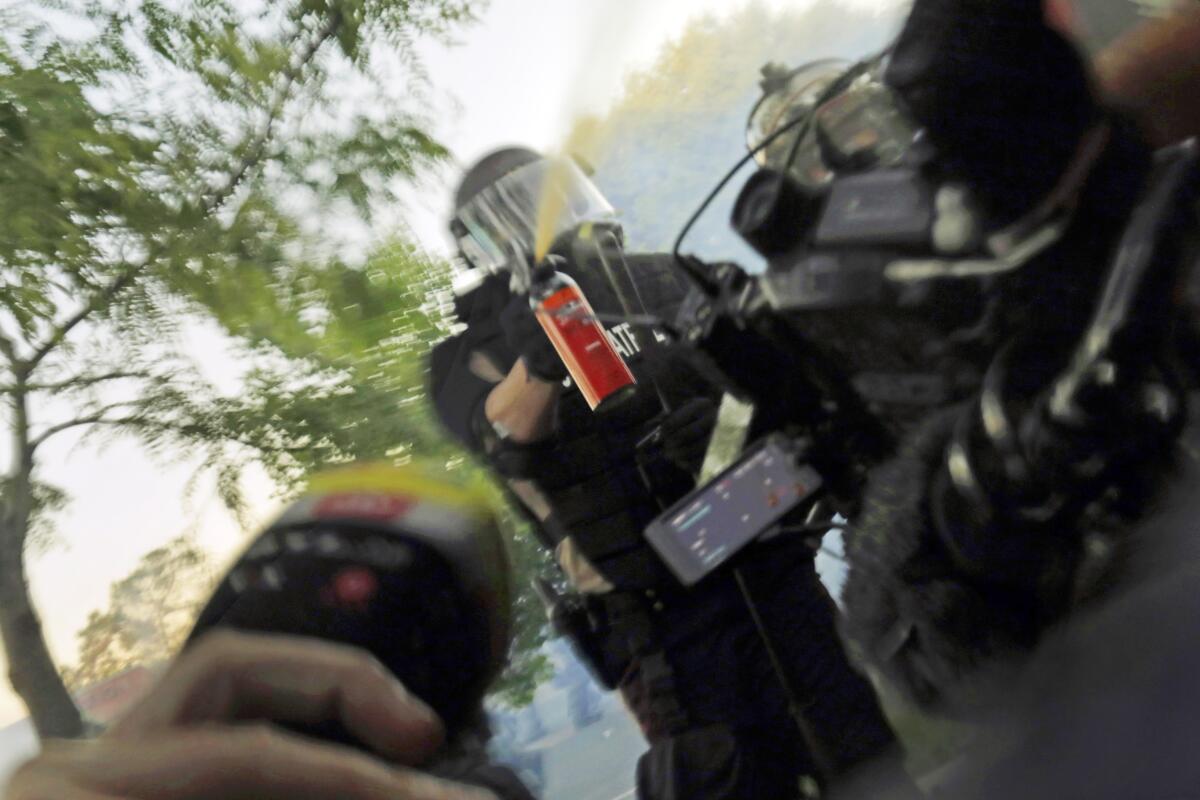
- Share via
Journalists know that when they cover chaotic and dangerous events, a press credential is a thin shield against the bullets flying and batons swinging around them. But as protests have spread around the nation in recent days, journalists have become the targets themselves because they are journalists.
That is troubling on a number of levels. Whatever you think about the fourth estate, news reporters serve as the public’s eyes and ears on the events shaping the world. And in too many cities, local law enforcement has been trying to stop them from showing the public the turmoil caused by the death of George Floyd — and the government’s response to it.
The media’s job is complicated by a president who routinely refers to the media as the the “enemy of the people,” a freighted designation that historically has come with official crackdowns and persecutions. President Trump resorts to inflammatory rhetoric with disconcerting regularity, but words have meaning, and consequences.
Two Los Angeles Times journalists covering the protests in Minneapolis recently — writer Molly Hennessy-Fiske and photographer Carolyn Cole — were targeted, along with colleagues from other outlets, by Minneapolis state police who fired at them with rubber bullets and tear gas, then pursued them as they sought shelter. That was not a one-off incident.
You can’t separate race from Trump’s attacks on ‘thugs’ in Minneapolis
The Nieman Lab, which covers trends in journalism, reported Monday that journalists had been attacked by police officers more than 110 times since May 28, when the street protests over Floyd’s death while in police custody in Minneapolis spread nationwide. Some of those incidents were incidental, as journalists got caught between factions. But many were intentional.
Nick Waters, who reports for the online investigative news site Bellingcat, has been keeping a running compilation of reports on Twitter of journalists attacked as they cover protests around the nation. A photographer jabbed in the stomach with a police baton in Los Angeles. A photographer in Indianapolis threatened by a police officer brandishing a rifle that fires “less than lethal” ammunition. A TV crew targeted with rubber bullets while broadcasting live in Louisville. Adding an international dimension, the Australian government has launched an investigation into the police tear gas assault on an Australian TV crew airing live from outside the White House.
In the highest-profile incident, CNN reporter Omar Jimenez and his camera and sound crew were arrested, also live on air, in Minneapolis, as was a local TV crew — two among a series of such abuses in that city. African American journalists have reported being singled out, including a reporter for the Detroit Free Press approached by a police officer as he stood amid a small group of white journalists.
And it’s not just police lashing out at journalists. Protesters themselves have targeted the media. A throng vandalized CNN headquarters in Atlanta. Protesters battered a Fox TV crew outside the White House. A mob assaulted a photographer in Fayetteville, N.C., as he took took video of them looting a store.
Even before the unrest over George Floyd’s killing, lawmakers have tried to revoke Americans’ sacred right to peaceful protest.
And on it goes. Although no journalists have been killed so far, some have been severely injured, including freelance photographer Linda Tirado, who reported on Twitter that she had permanently lost the use of her left eye after being struck in the face by a rubber bullet in Minneapolis. The photographer attacked by the looters in Fayetteville reported he suffered a concussion. The Times’ Hennessy-Fiske and Cole suffered injuries, too.
As dispiriting as it is for journalists to be attacked by members of the public, it is even more problematic — and dangerous for democracy — when the attackers are sanctioned by the government. A police officer in paramilitary garb and armed to the teeth sends a specific message when targeting those who, exercising their 1st Amendment rights, are trying to serve as witnesses to governmental actions amid social unrest. It’s not paranoid to think that attacks in those circumstances — and scores of them nationwide — are acts of governmental intimidation intended to dissuade those who would bear witness.
It’s always hard to tell how intense a storm is when you stand in the middle of it, so it’s unclear whether the current outpouring of grief and anger around the nation will bend the long arc toward justice for African Americans and other people of color. We hope the past week reflects a broad chorus of American voices from across the spectrum of race and class rising to tell police — and the governments that employ them — that they must reform how they enforce laws and deal with communities they have historically mistreated.
But in the meantime, police and government officials need to recognize how important it is for journalists to bear witness to these events, as well as their right to do so without fear of being targeted by agents of the state.
More to Read
A cure for the common opinion
Get thought-provoking perspectives with our weekly newsletter.
You may occasionally receive promotional content from the Los Angeles Times.
